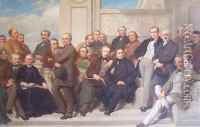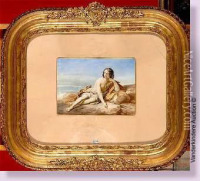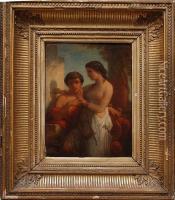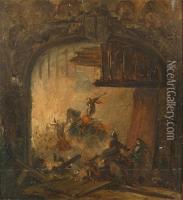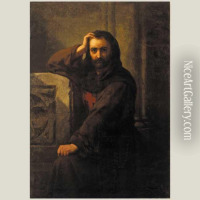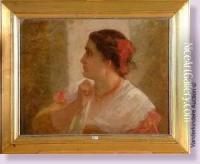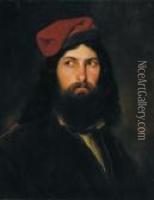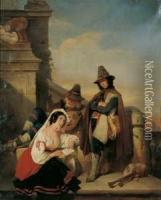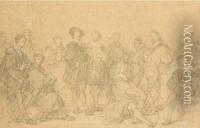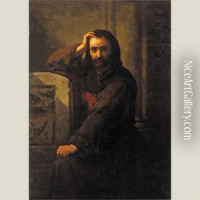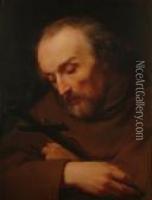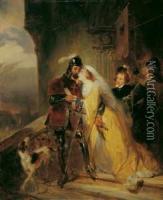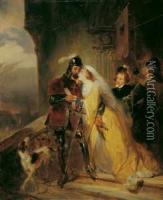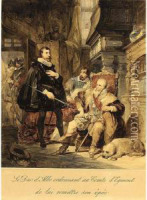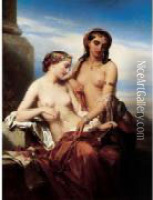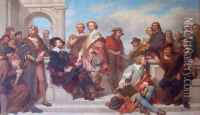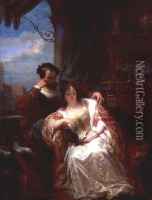Nicaise de Keyser Paintings
Nicaise de Keyser was a prominent Belgian painter who played a pivotal role in the Romantic movement of the 19th century. Born on August 26, 1813, in Zandvliet, near Antwerp, he was initially educated at the Antwerp Academy under the guidance of Gustaf Wappers. De Keyser quickly gained recognition for his historical paintings that often depicted grand, dramatic scenes, often with a focus on Belgian history.
His early works were influenced by his teacher Wappers and the broader European Romantic movement, characterized by a fascination with the past, national identity, and the expression of intense emotion. De Keyser's painting 'The Battle of the Golden Spurs', which he completed in 1836, is a prime example of this, celebrating a historic Flemish victory and contributing to the rising sense of Belgian national identity following the country's independence in 1830.
Throughout his career, De Keyser received numerous commissions for public buildings, including the Antwerp City Hall. His reputation grew as he became associated with the Romantic movement, and he was later appointed as the director of the Antwerp Academy, a position he held from 1855 until his death. During his tenure, he influenced a generation of artists, and under his leadership, the Academy became a hub of artistic activity and innovation.
In addition to historical scenes, De Keyser also painted portraits of notable figures of his time, genre scenes, and religious subjects. His style evolved over the years, incorporating more realism and detail into his work. De Keyser's prominence in the Belgian art scene was recognized with numerous awards and honors. He was also a member of the Royal Academy of Fine Arts in Belgium.
Nicaise de Keyser passed away on July 17, 1887, in Antwerp. His legacy continues to be celebrated in Belgium and beyond, with his works held in various museums and collections. De Keyser's contributions to the Romantic movement and the development of Belgian art mark him as a significant figure in 19th-century European art history.
